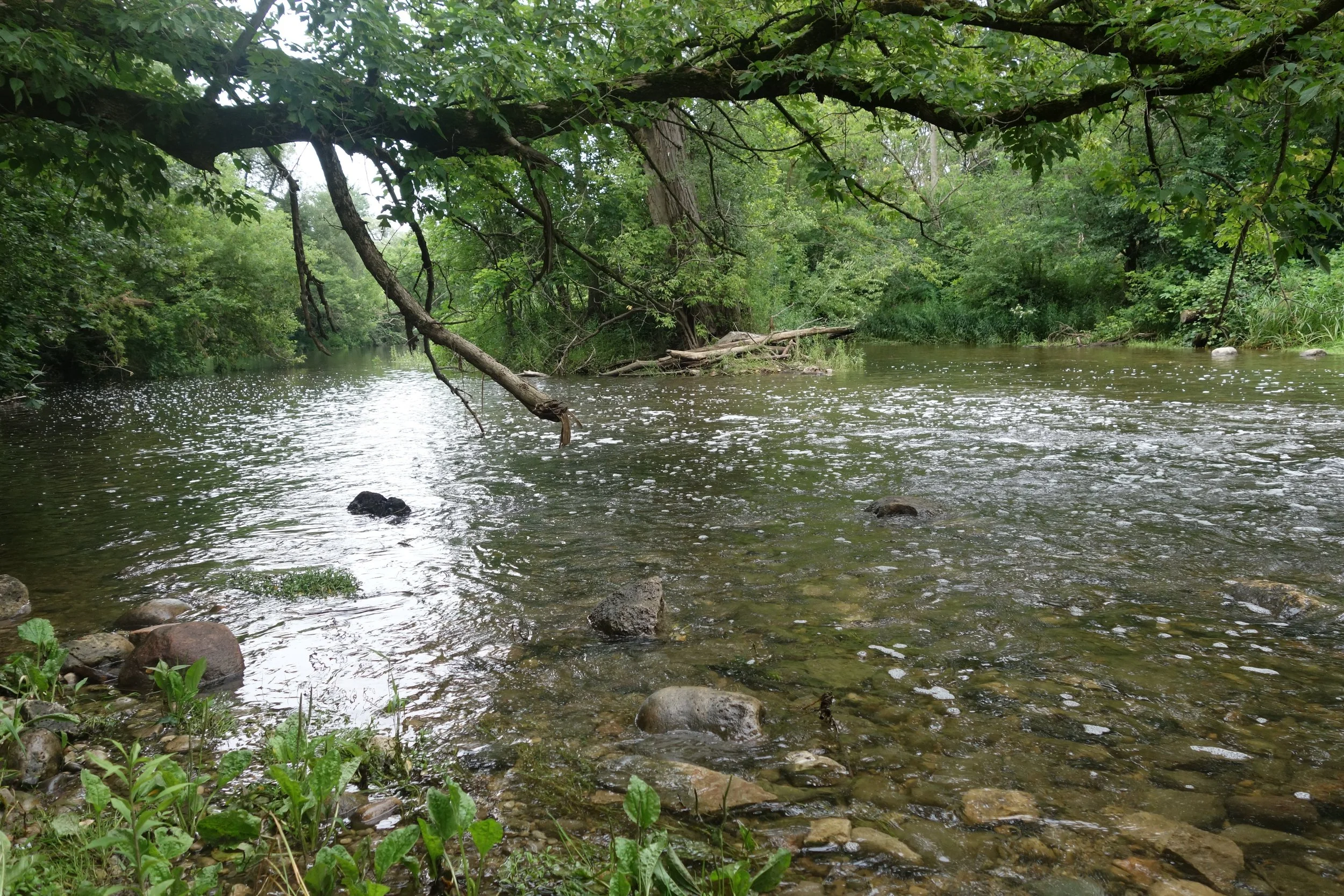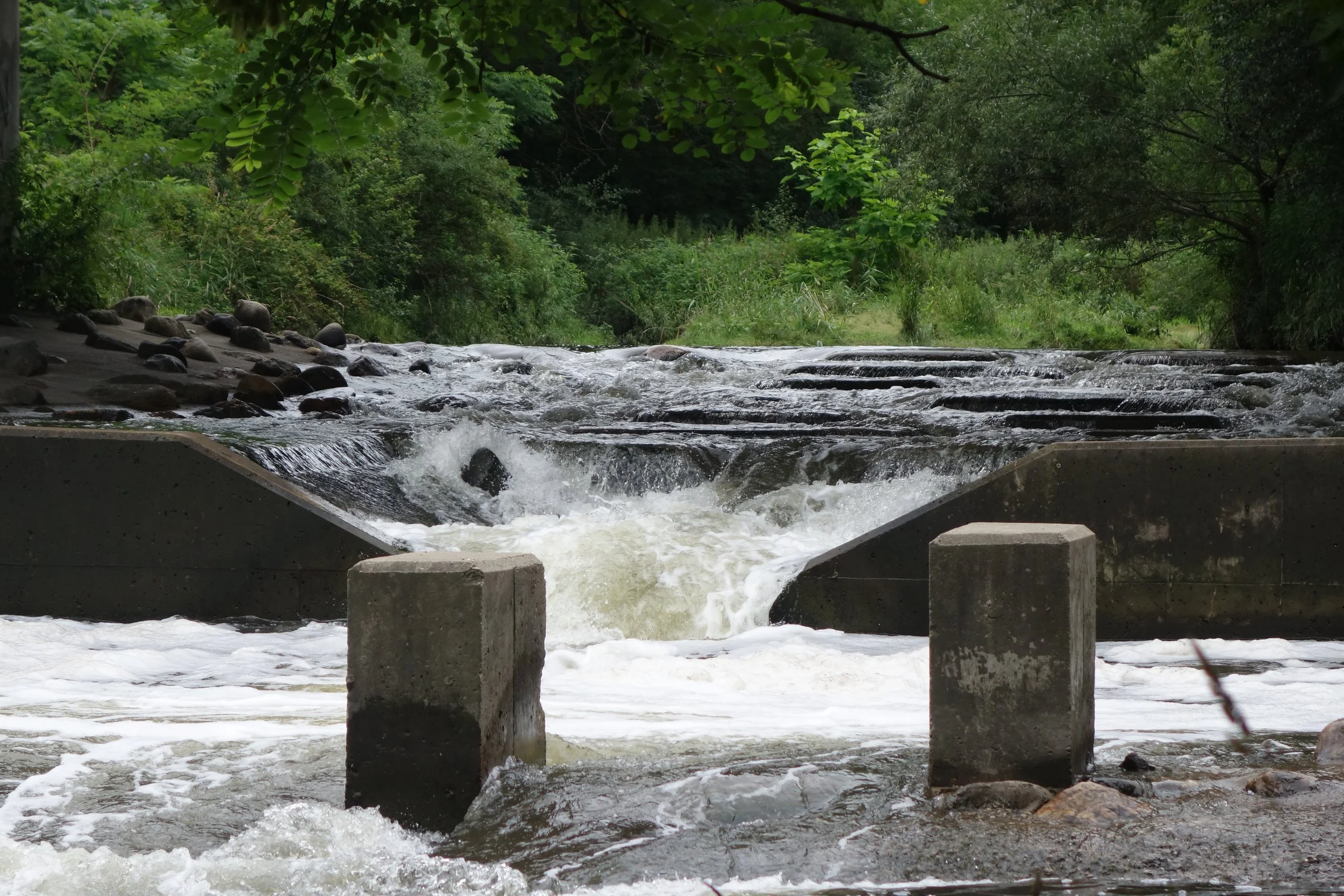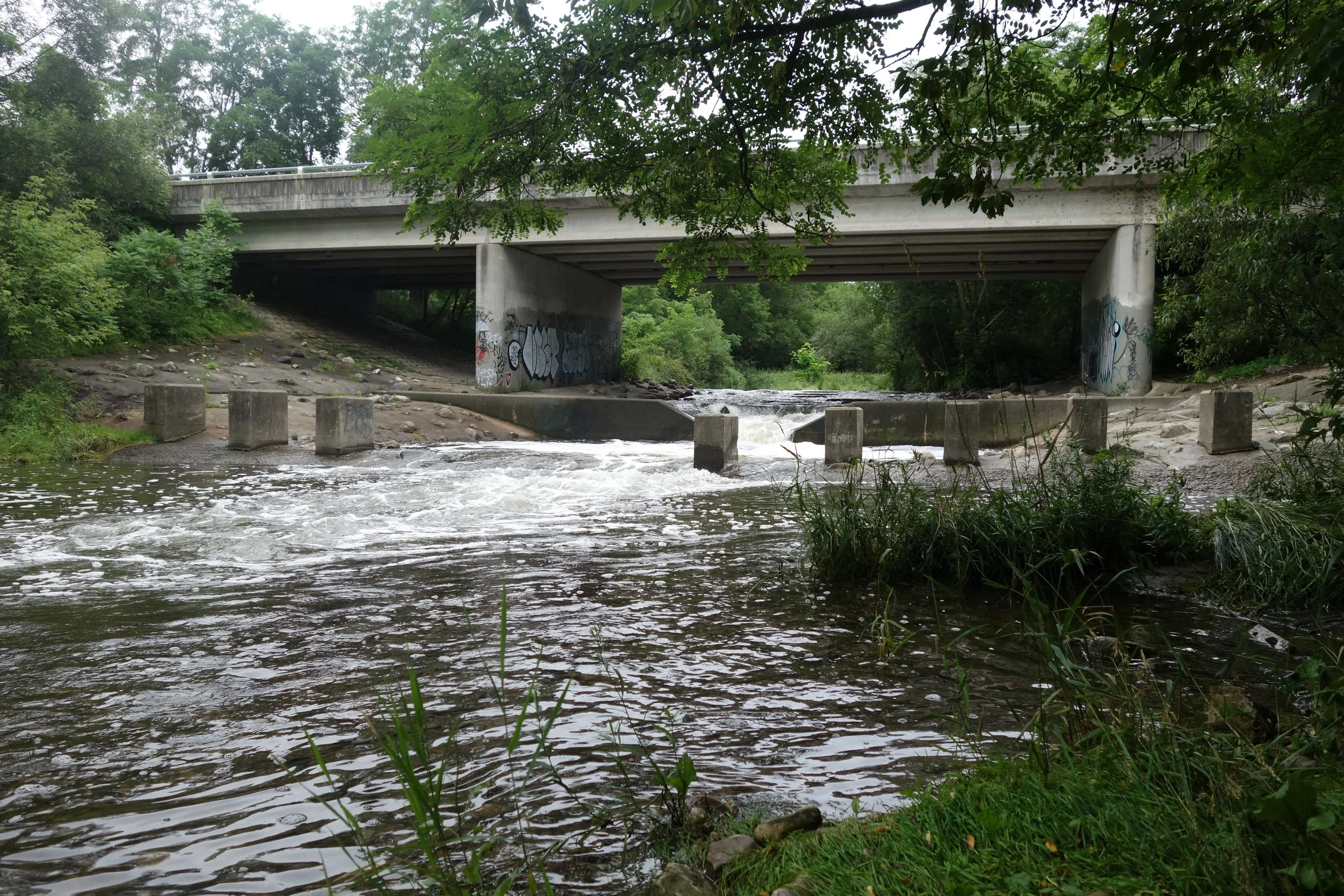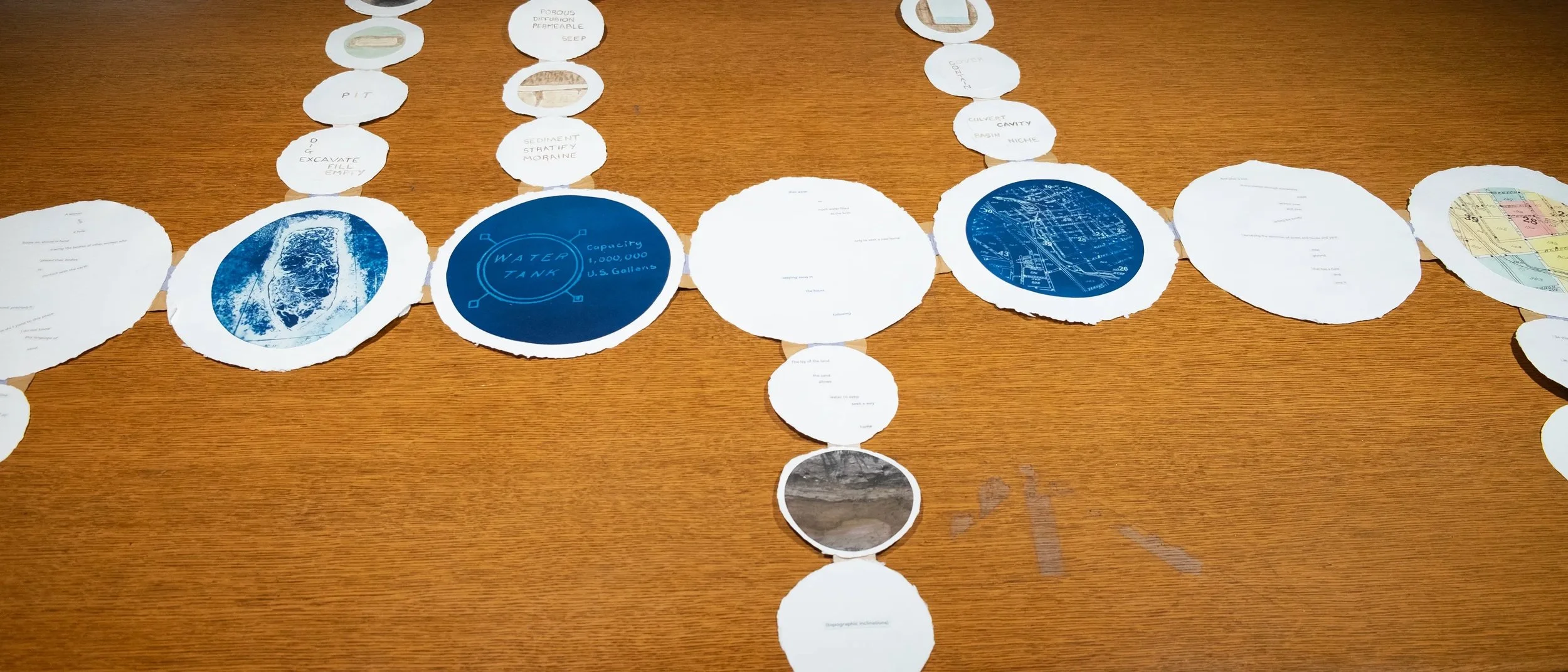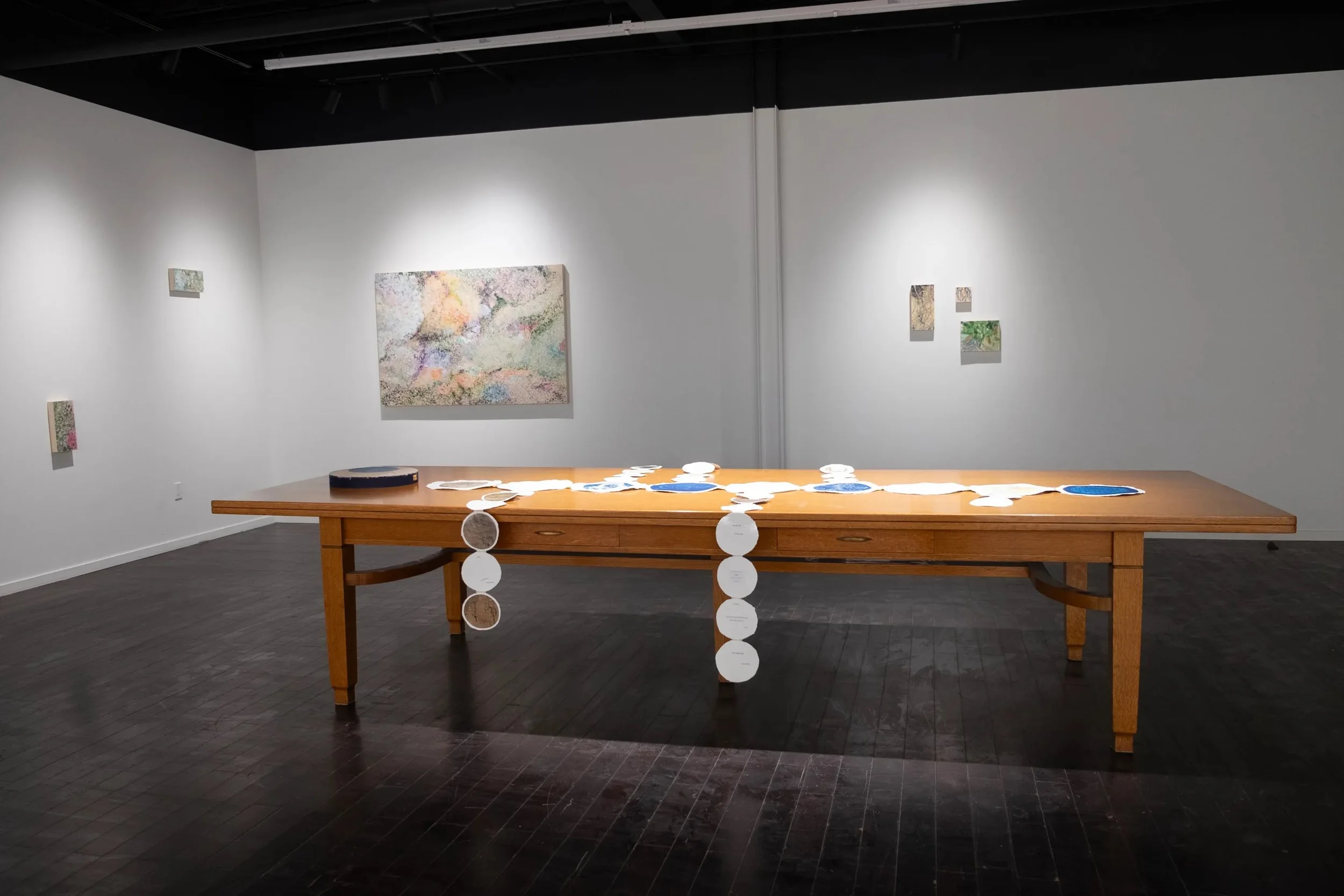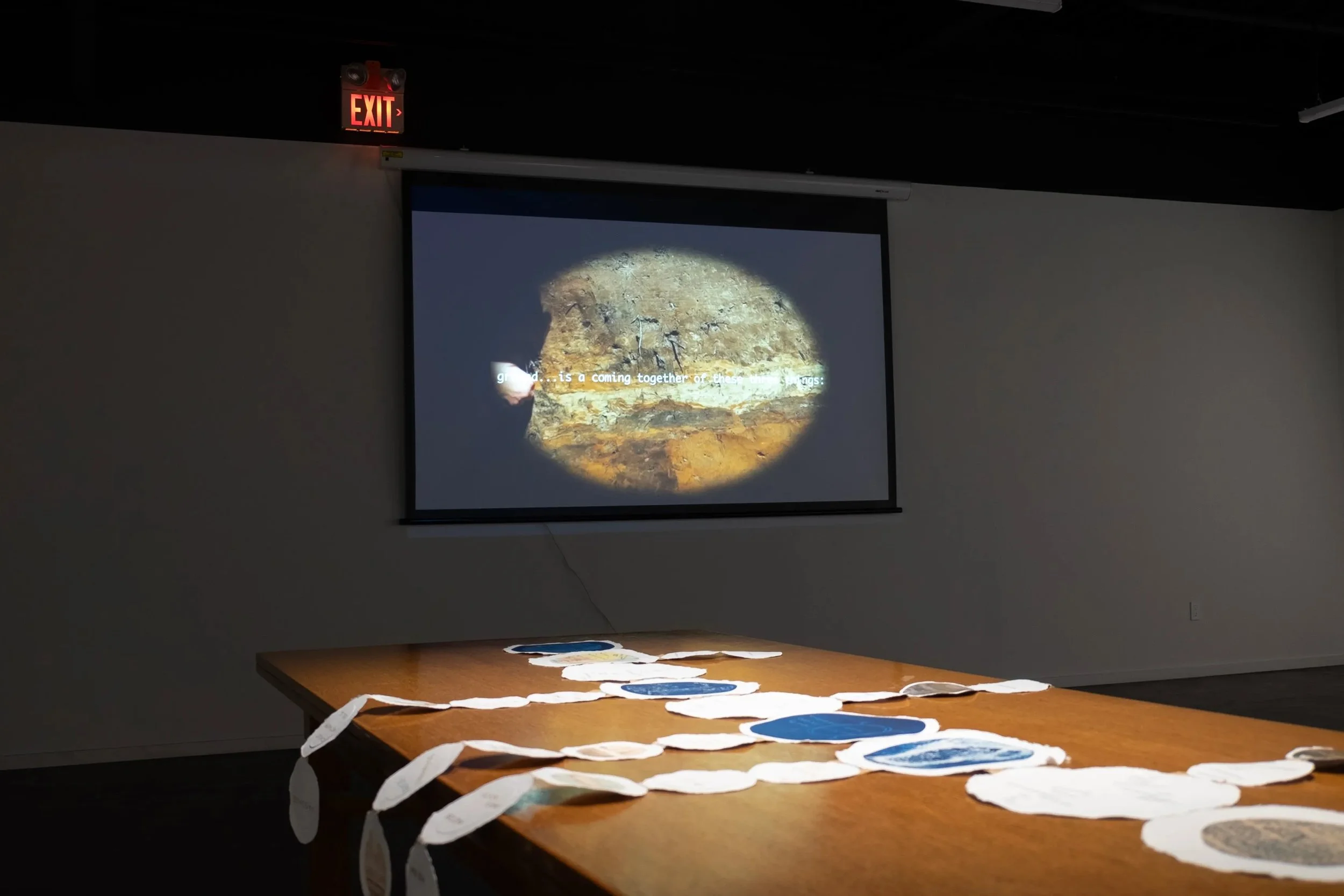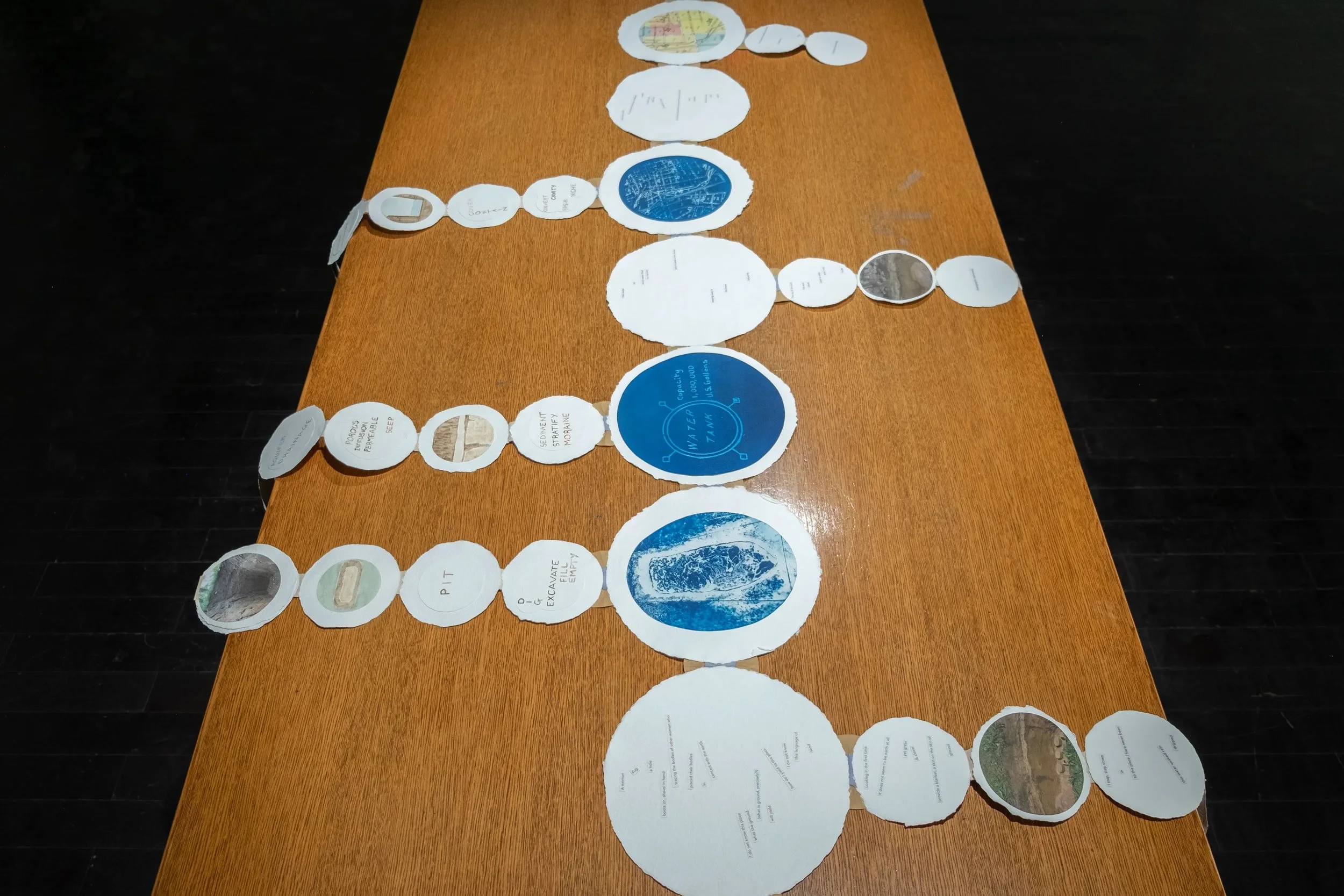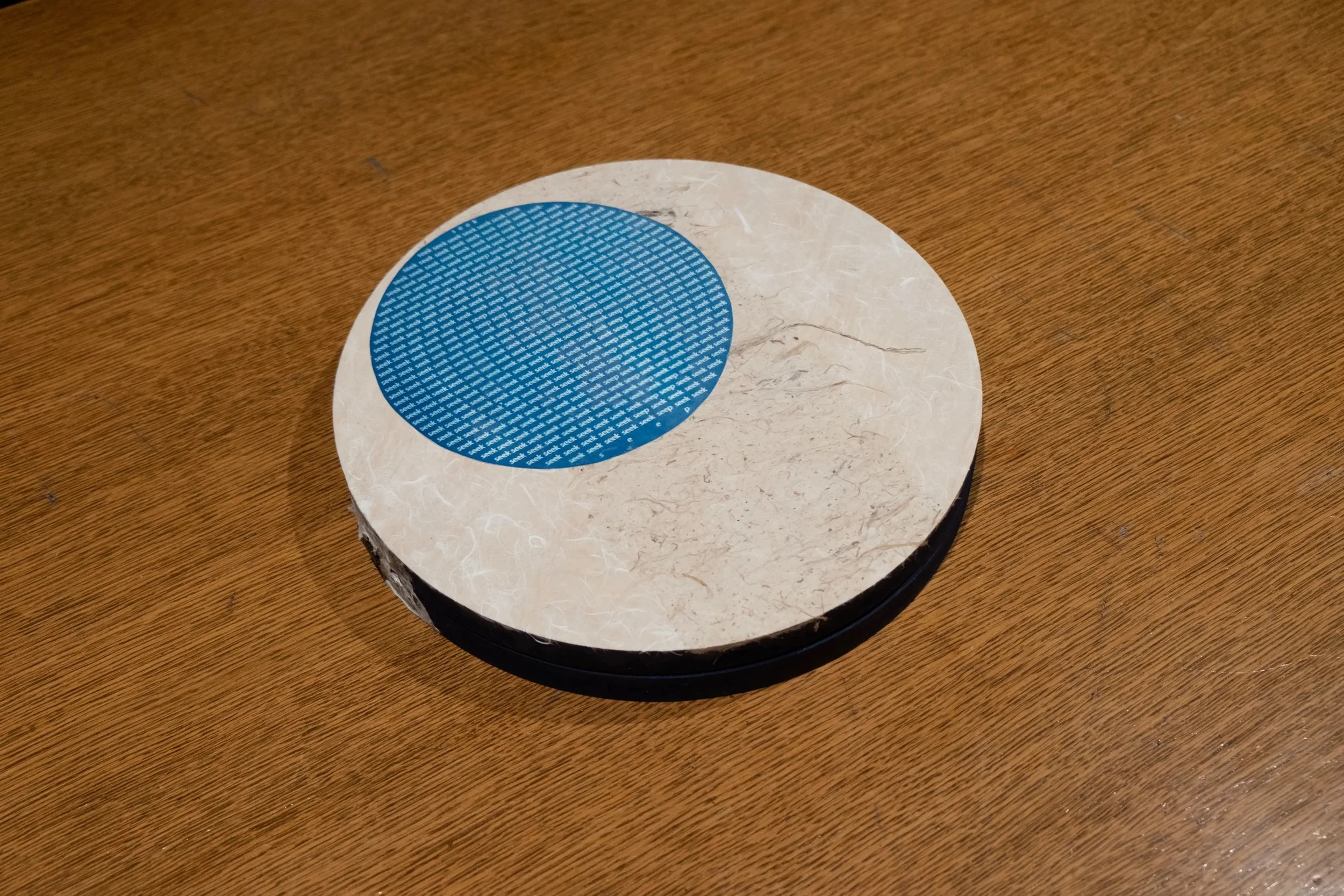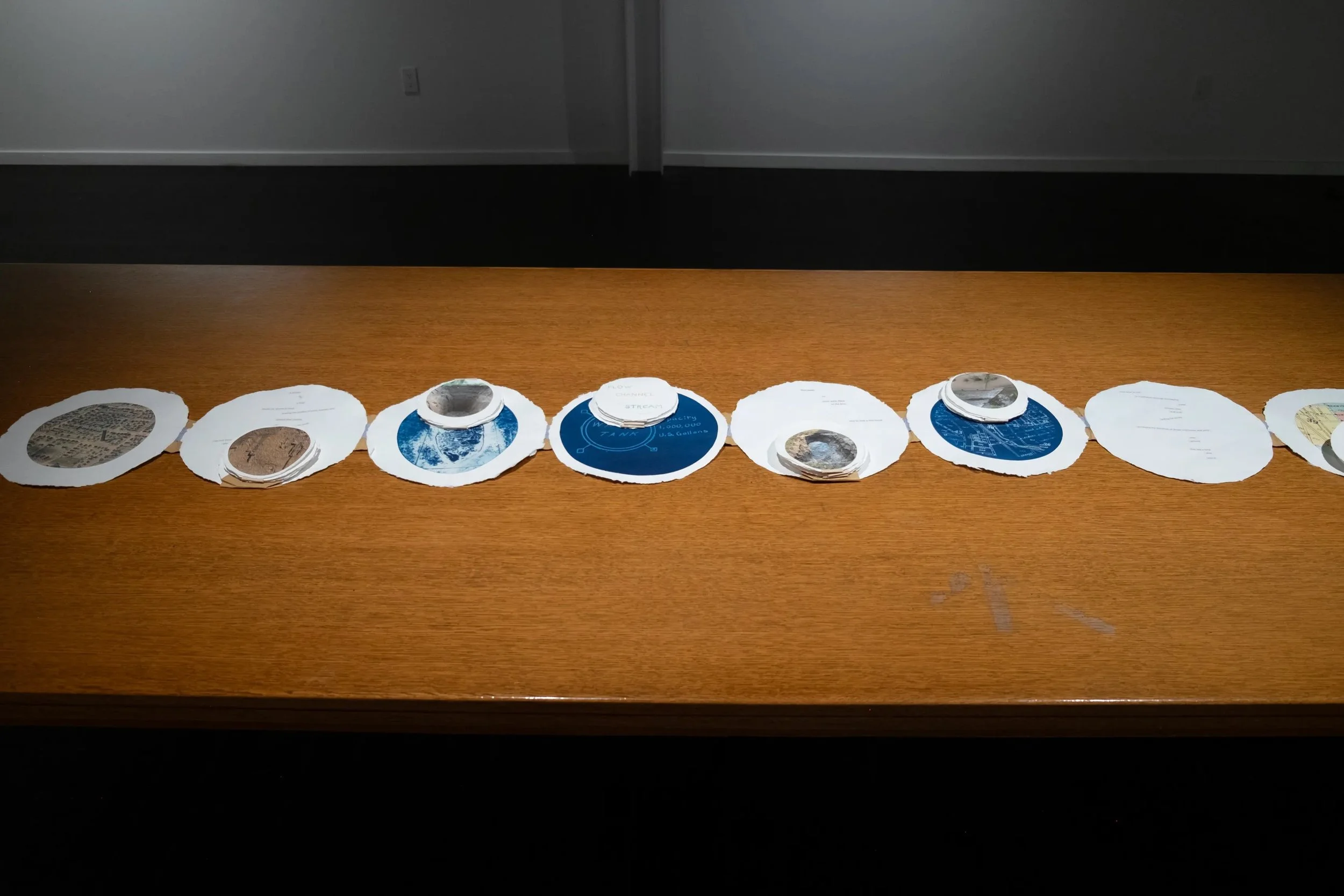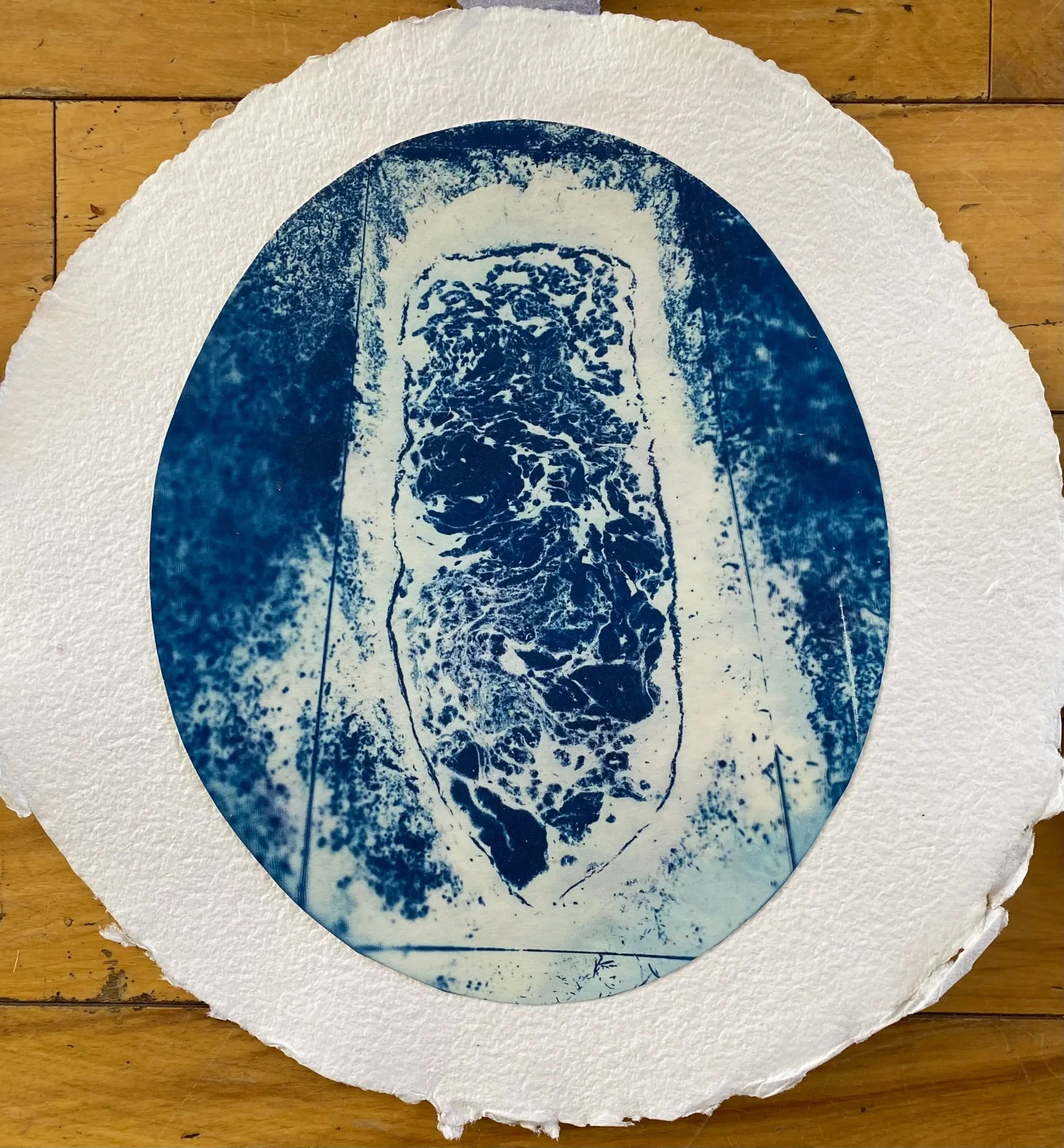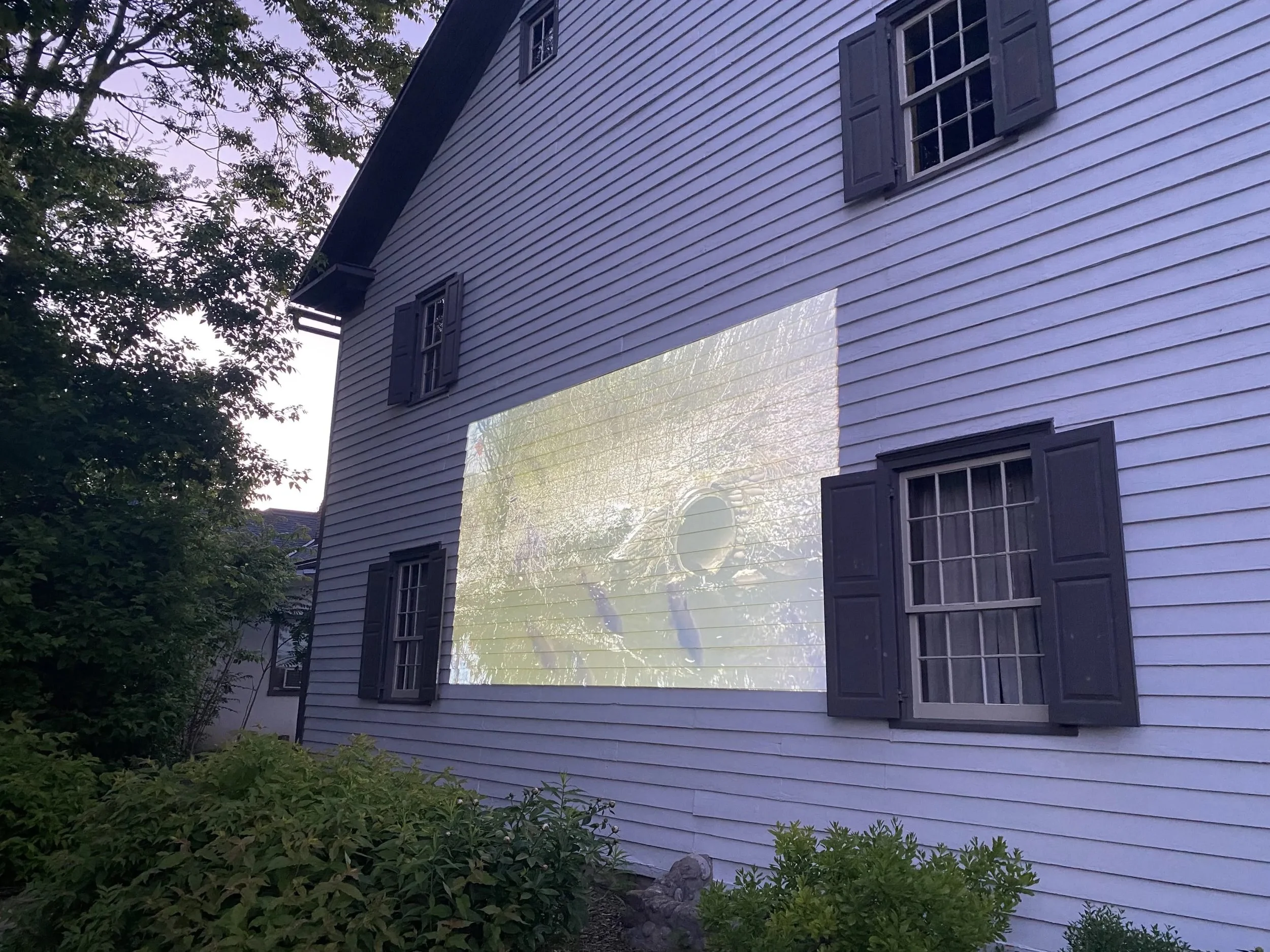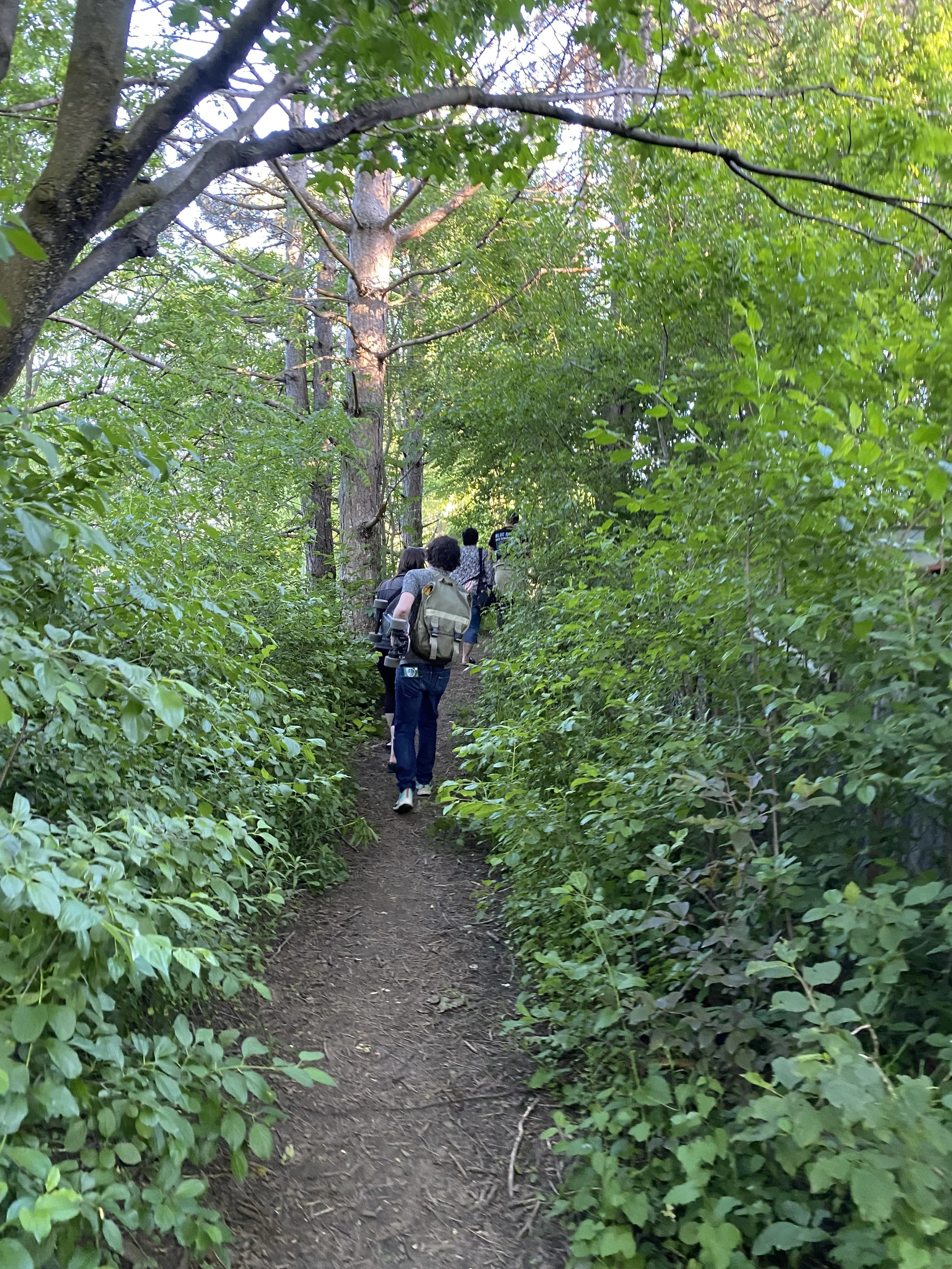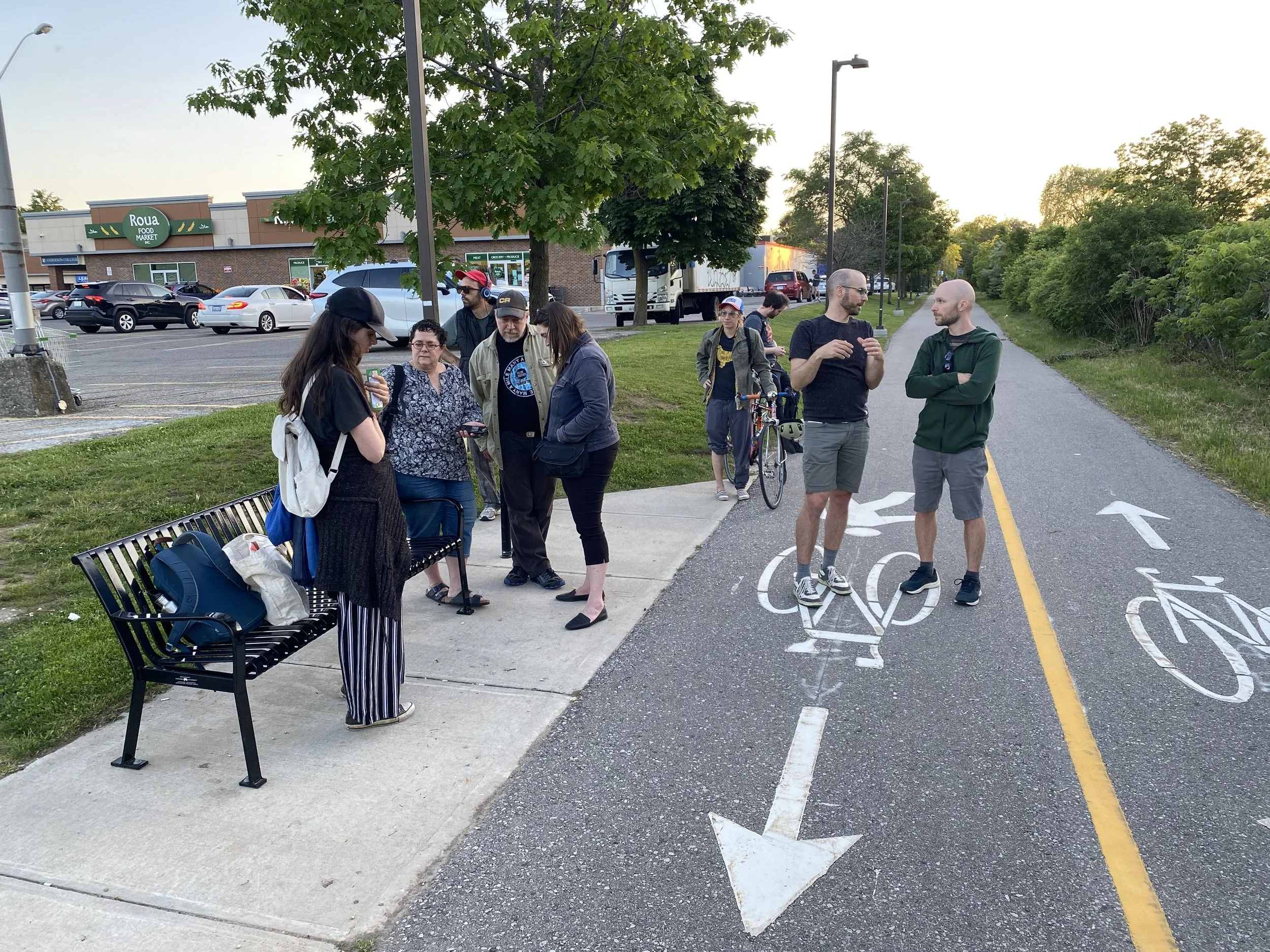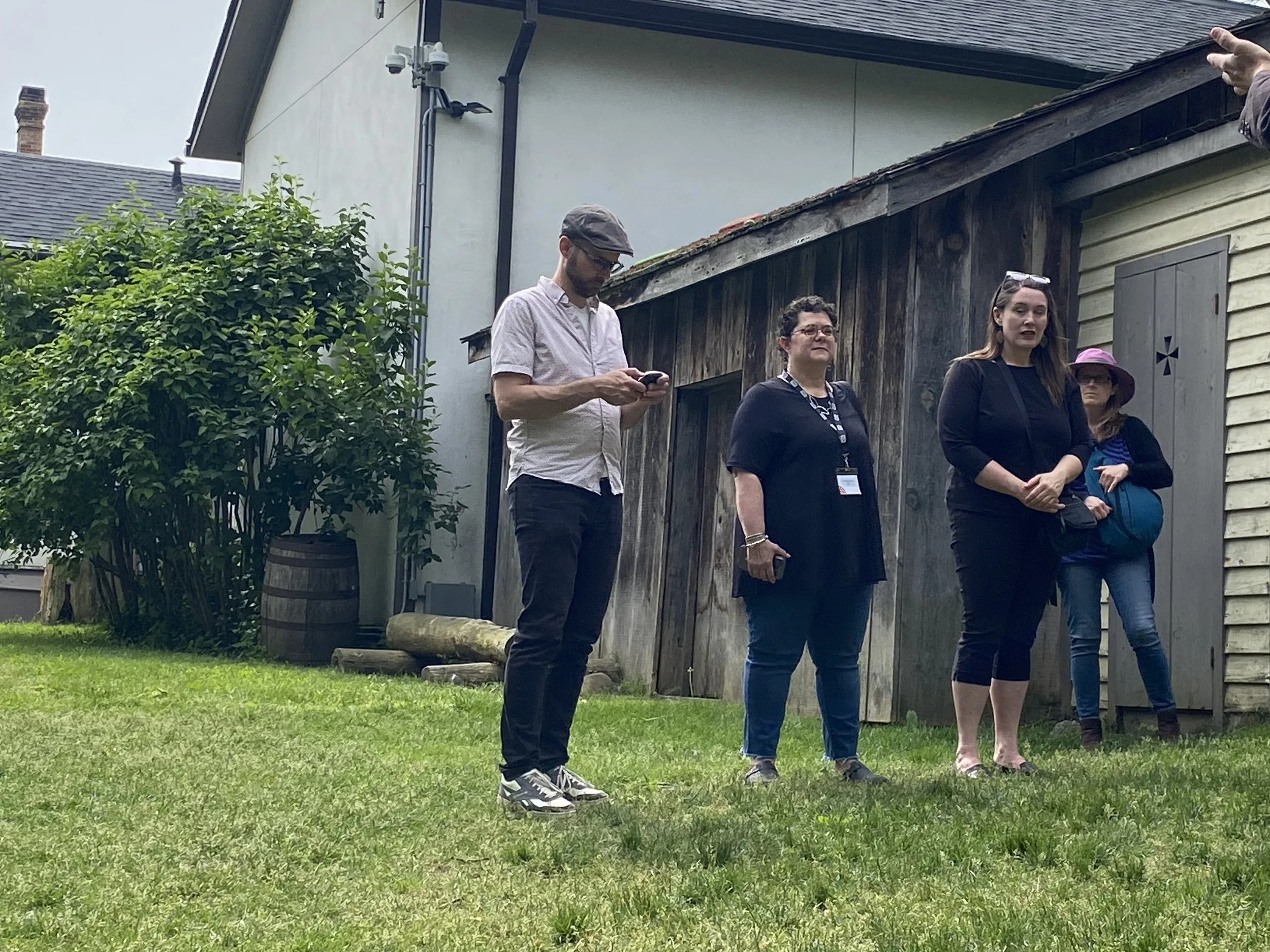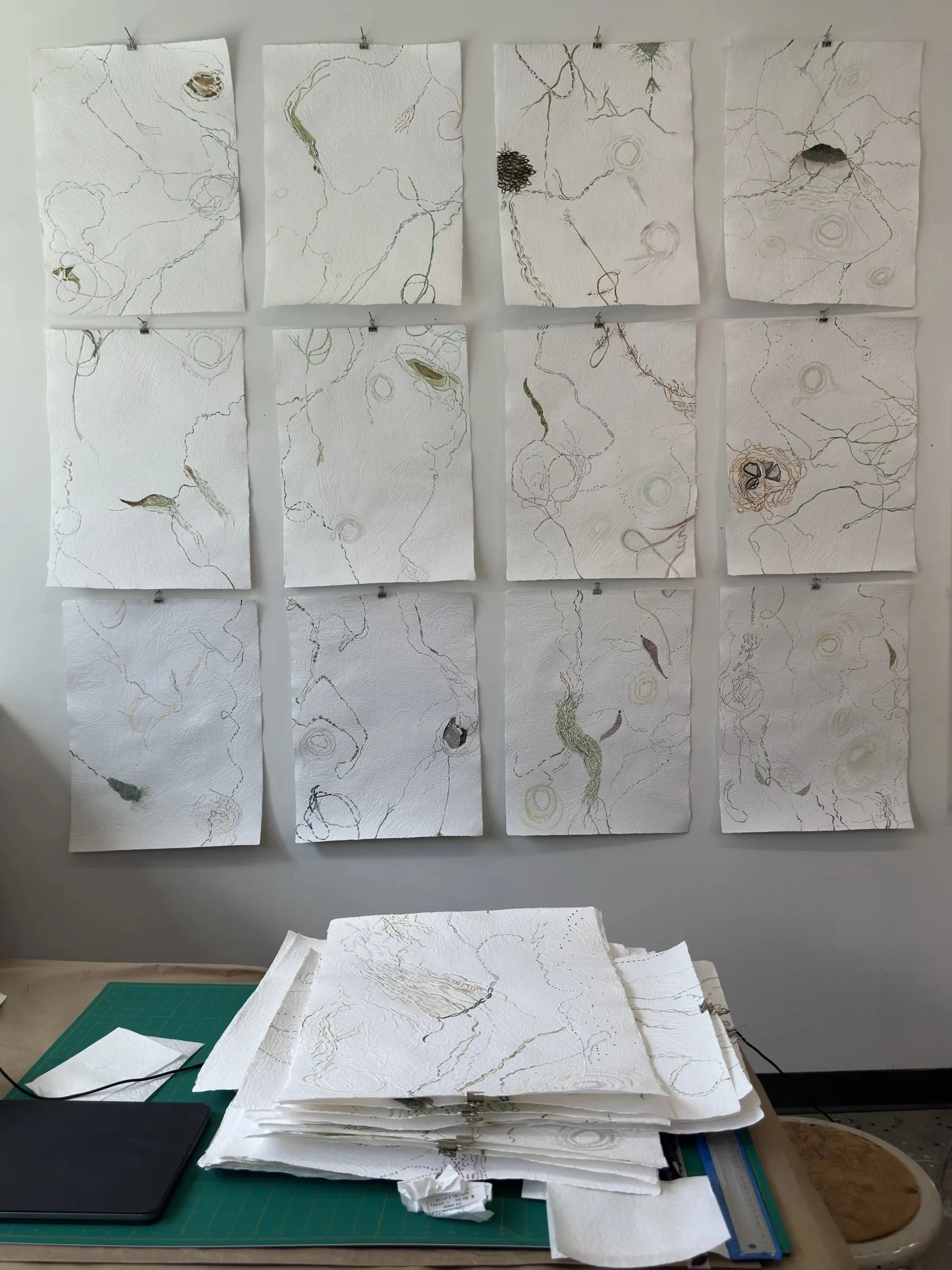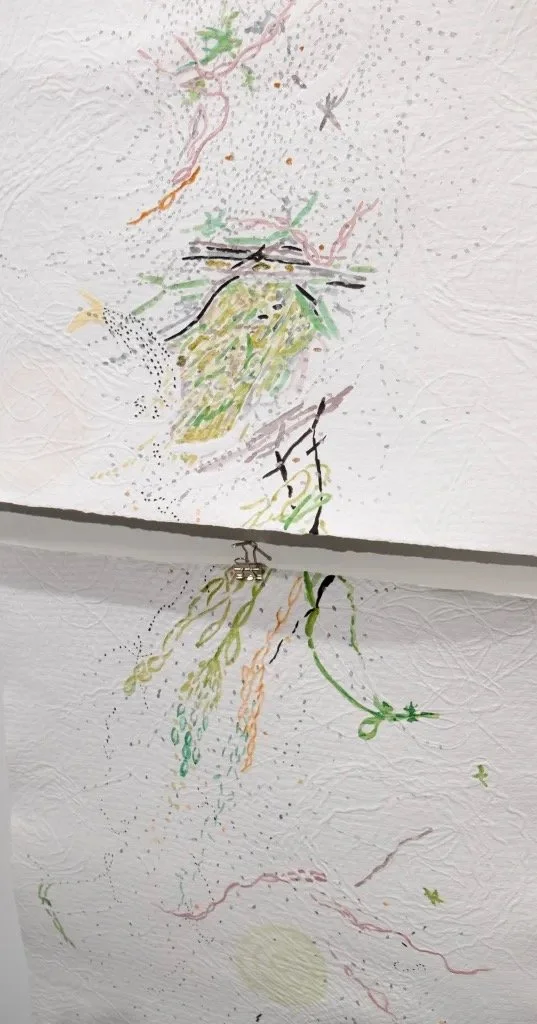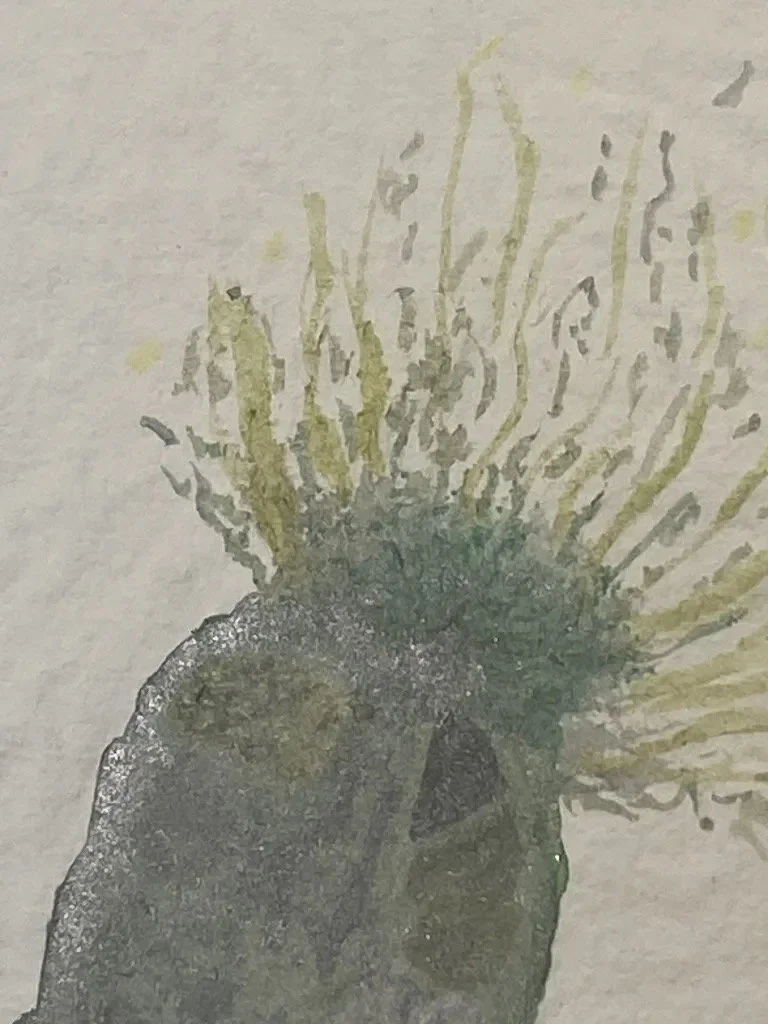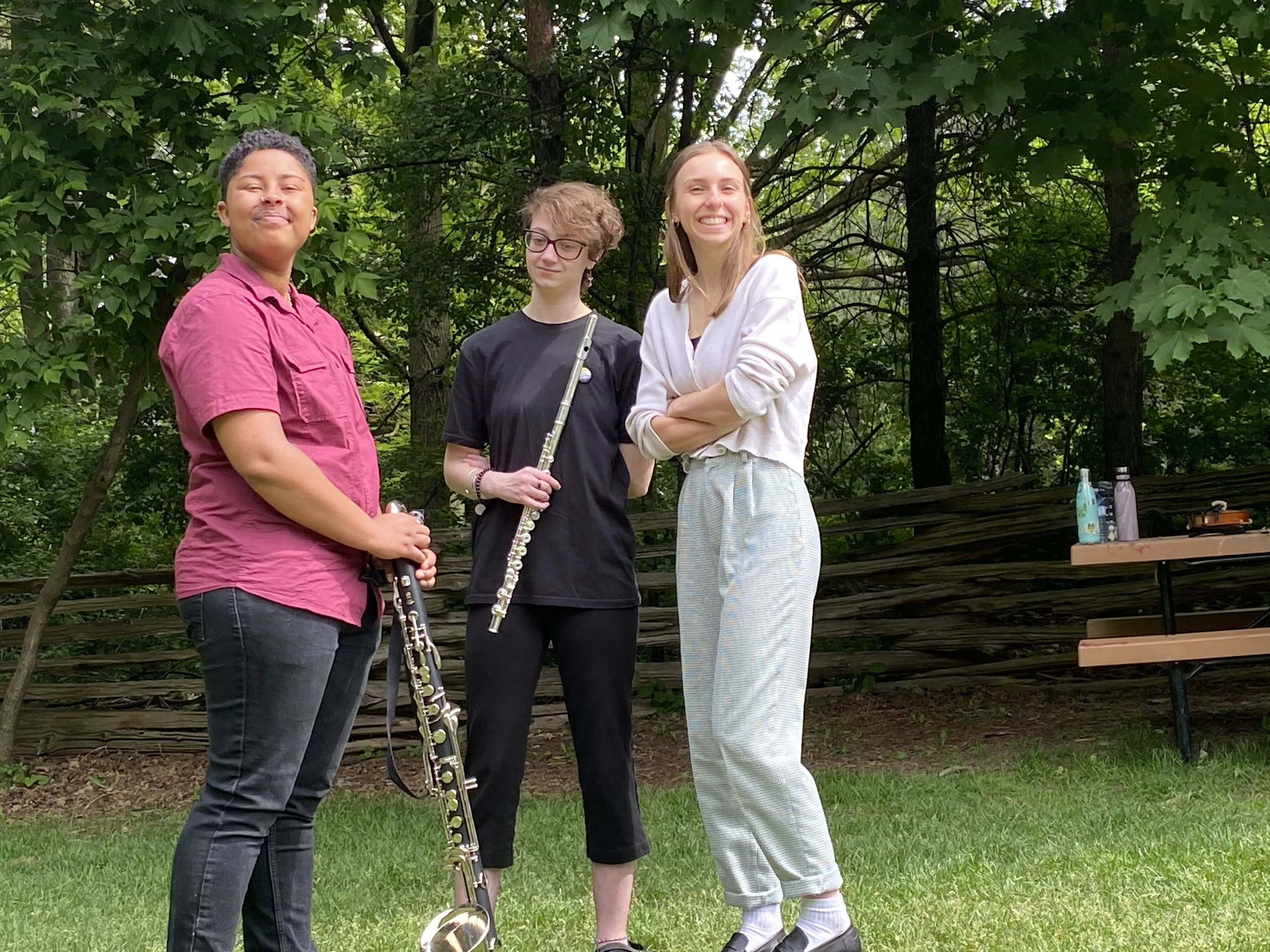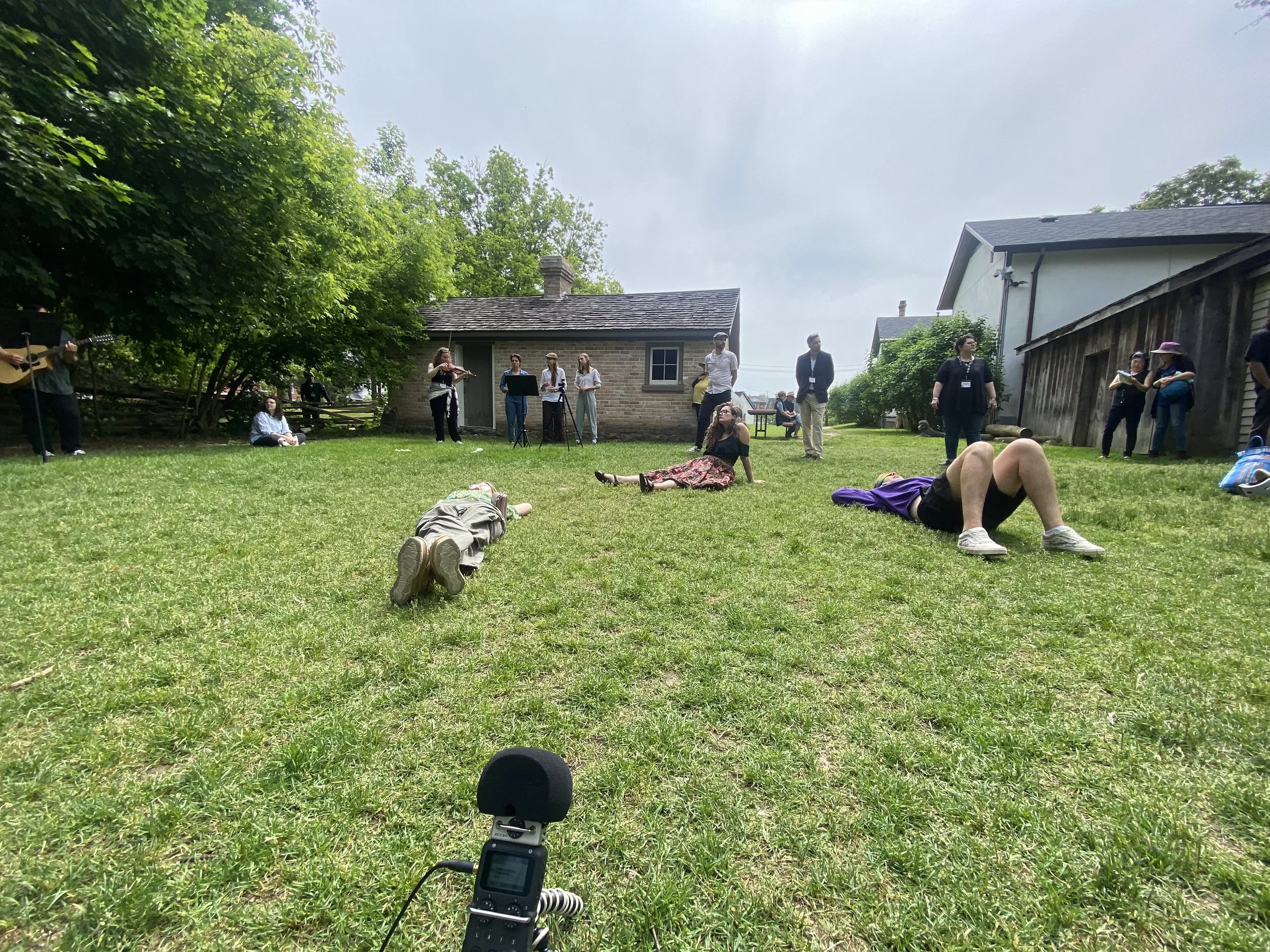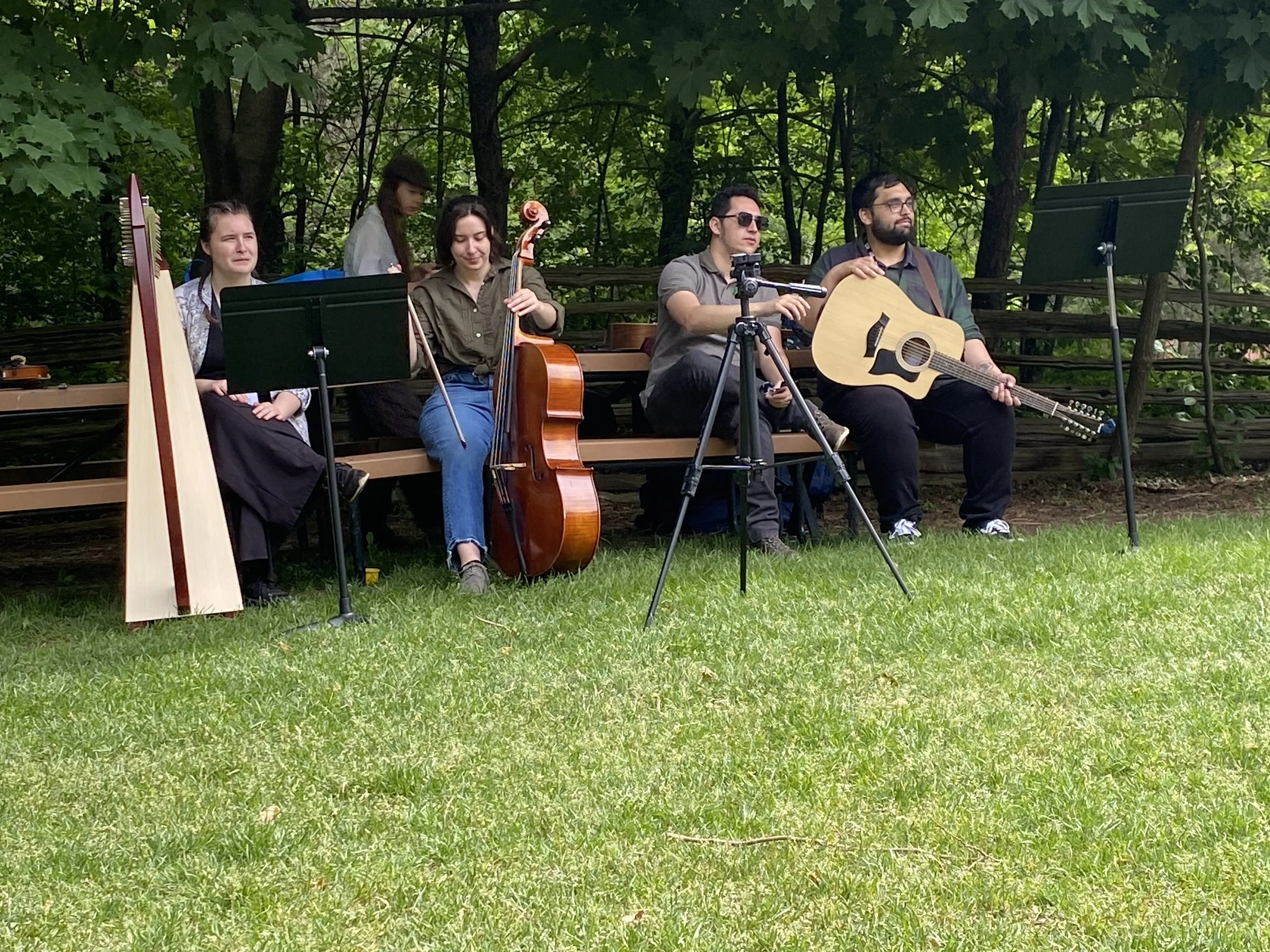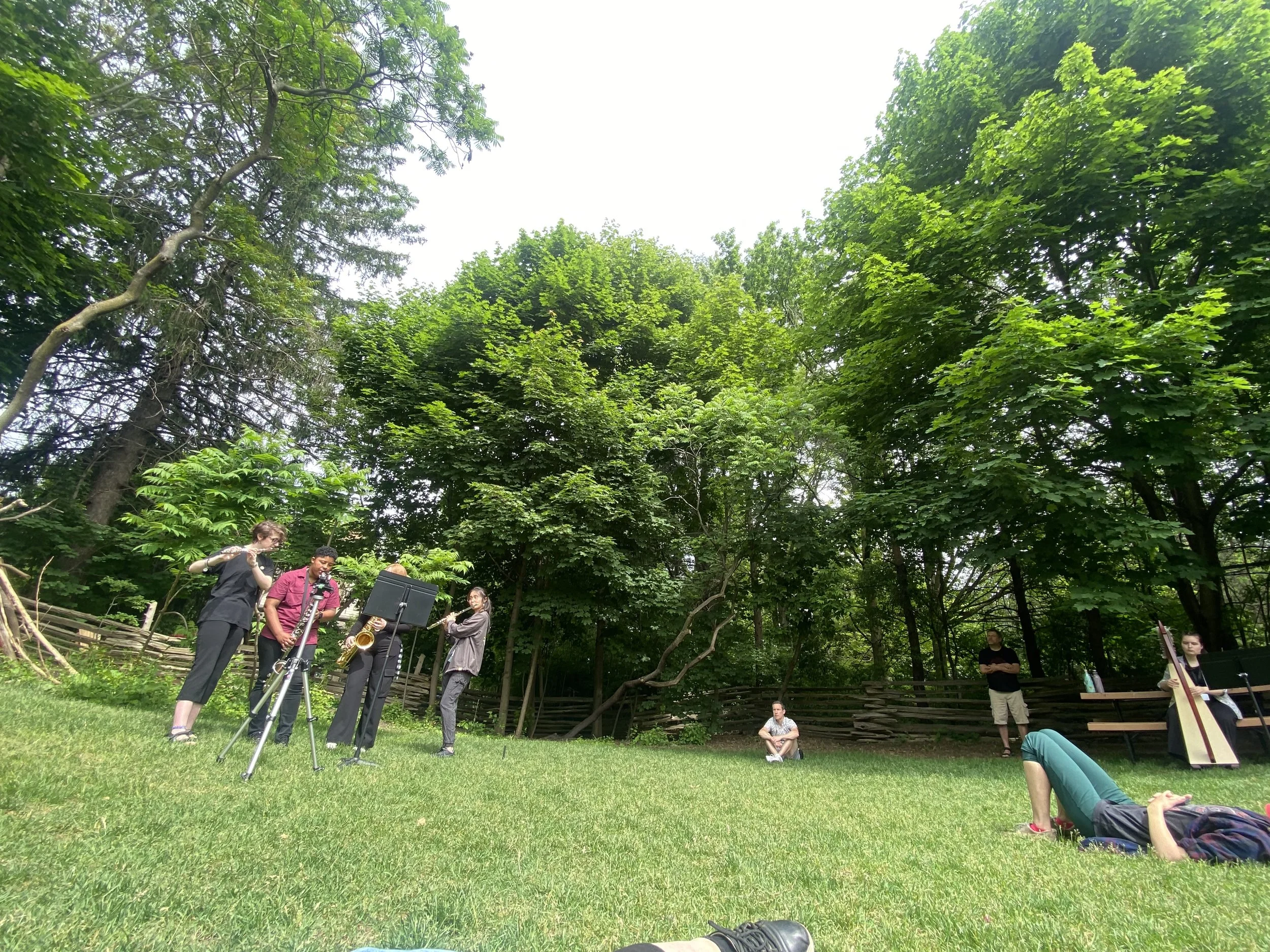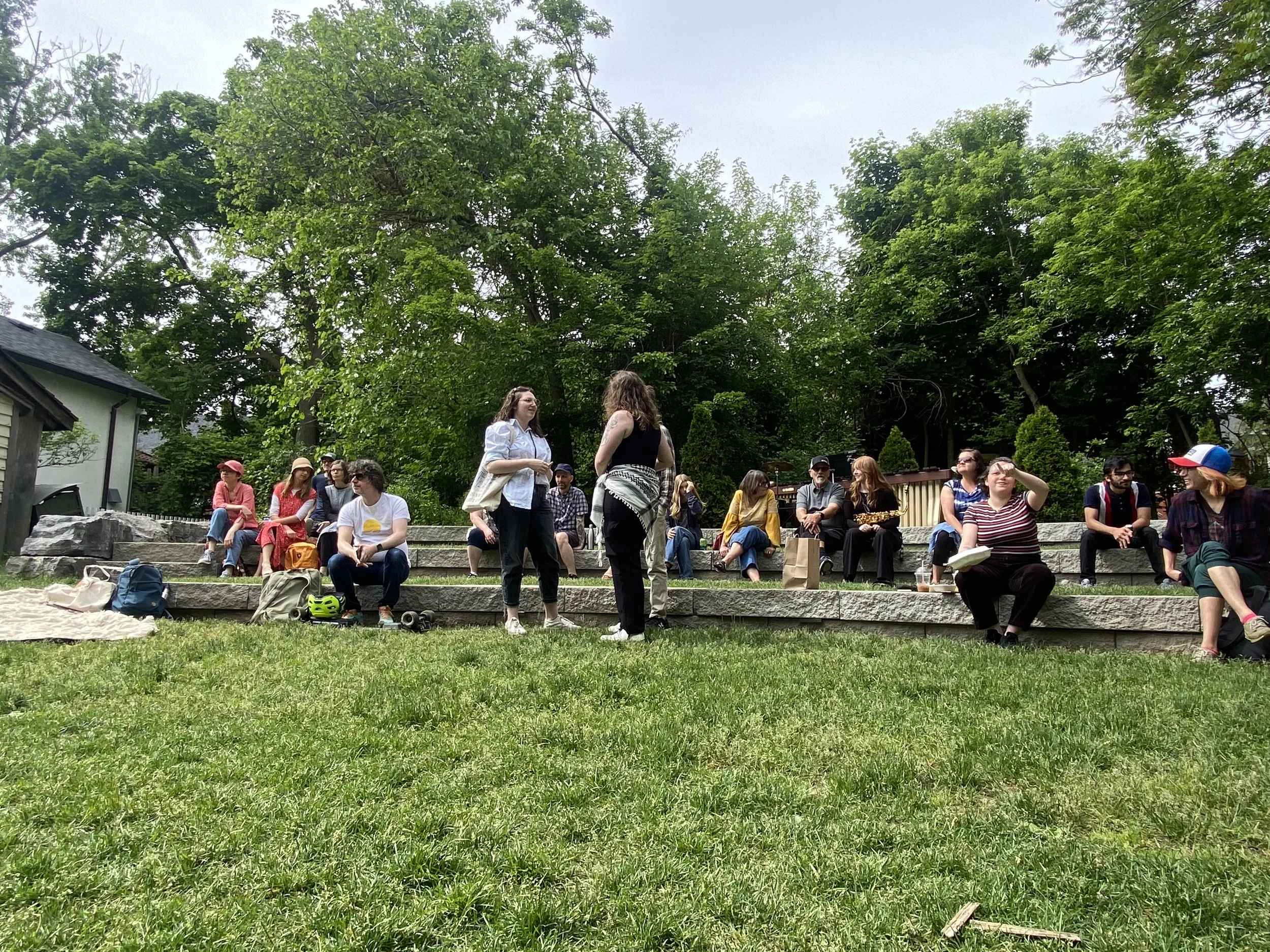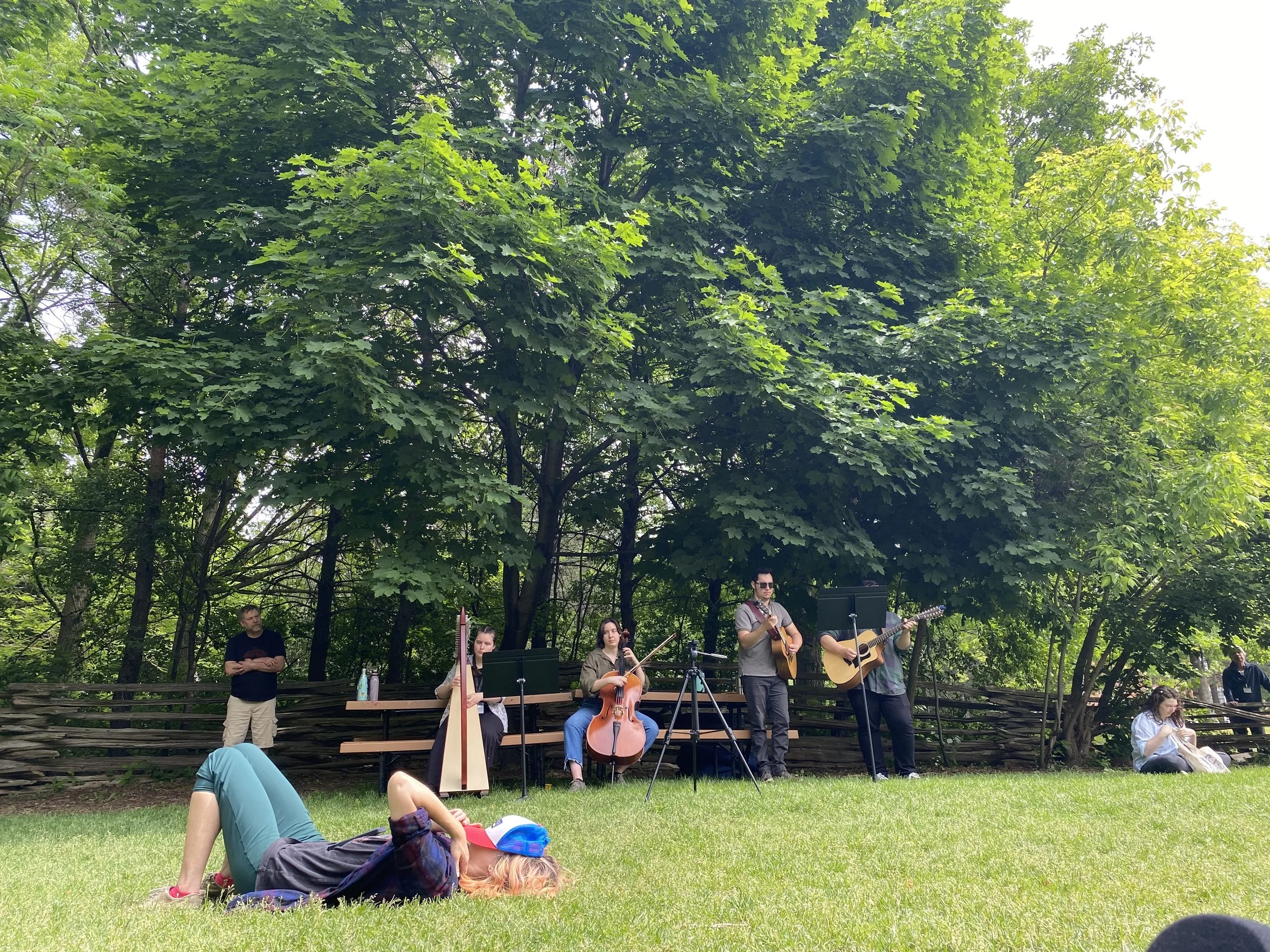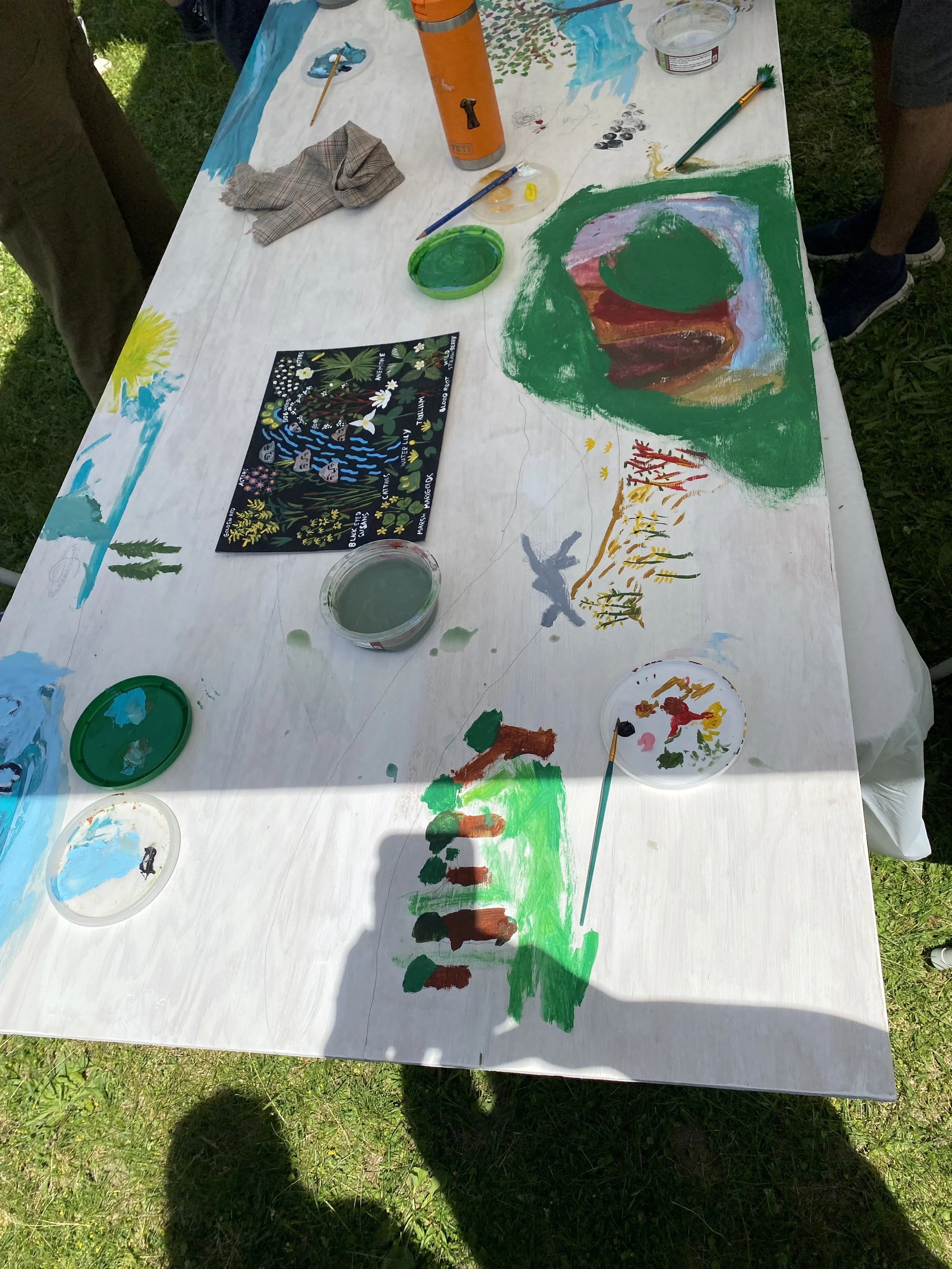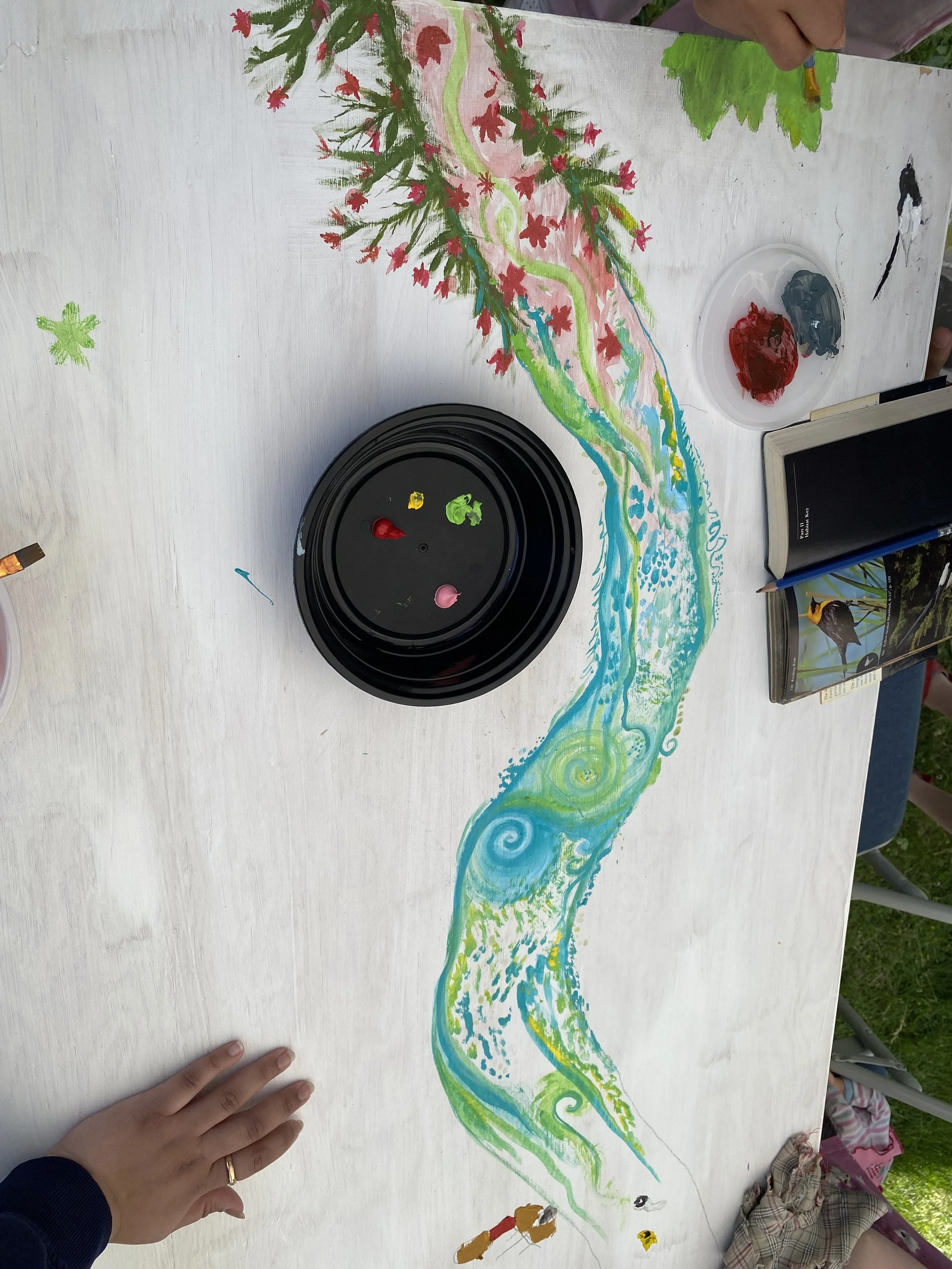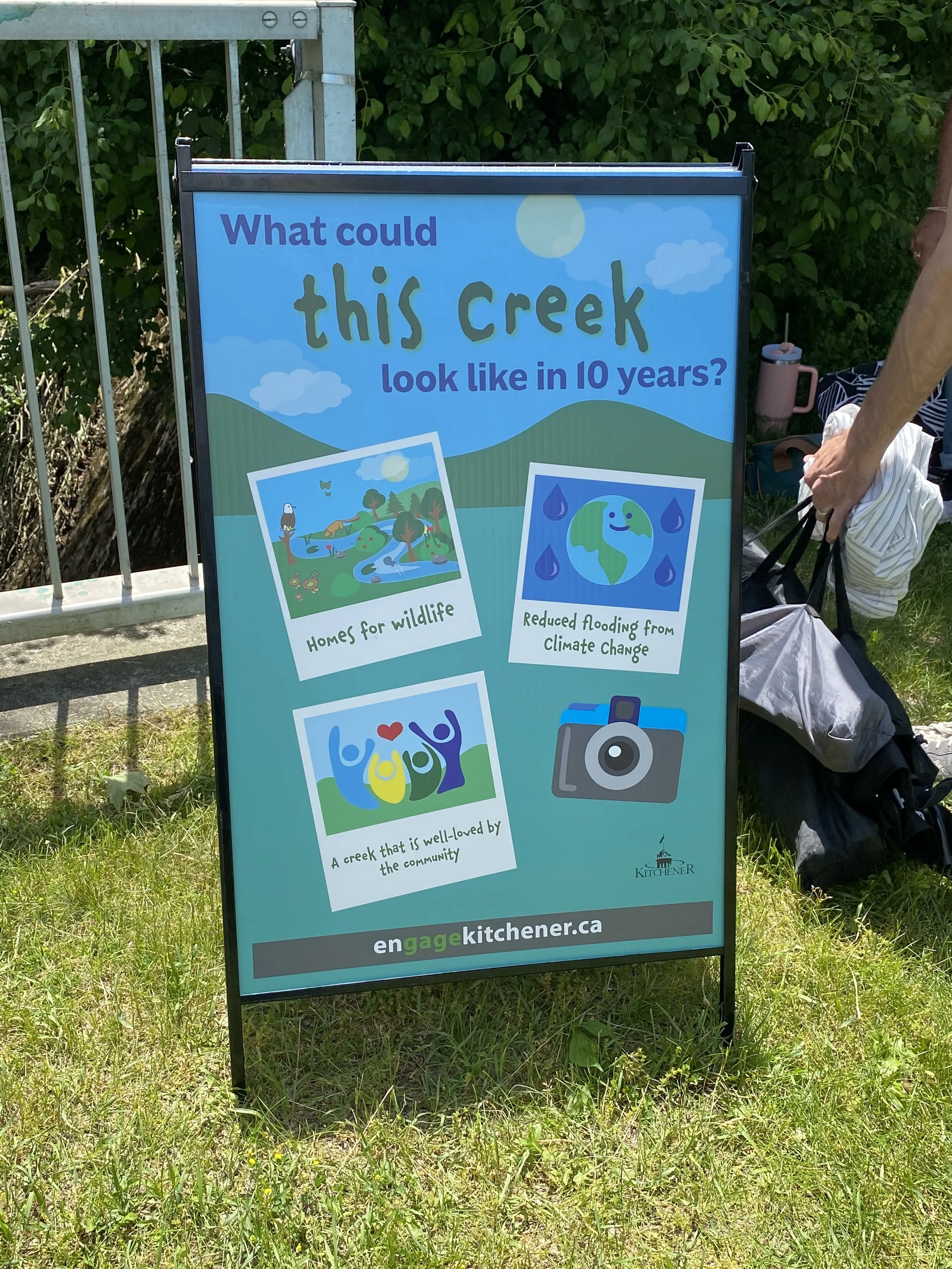creek*
What does it mean to truly be in relationship with all the living beings surrounding you?
What if we ALL thought of water and watercourses as the living, vibrant entities they are?
Not as a resource, but a Community Member - whose needs should be considered, and to whom we are responsible.
The works that currently make up the creek* project aim to consider the impacts of urban development upon a watercourse (Schneider Creek in Kitchener, Ontario, Canada) from the creek’s point of view. Over the past two hundred years, Creek has experienced extensive settlement, industrialization, and urbanization along its banks and has been extensively modified so that it is now partially contained in buried tunnels and by open concrete culverts. Those dramatic changes to the creek’s course and flow are important in its story, particularly now that local discussions center on renaturalizing sections of Schneider Creek to mitigate environmental and ecological degradation and to minimize potential flooding due to climate change. Creek’s story is bound to its community (both human and more-than-human), just as the changes Creek has experienced over time have changed and shaped the wider community itself.
This project had its beginning in a Residency hosted by Inter Arts Matrix in Kitchener ON, Canada. Through my work for the “Hole in the Ground” project, I had the good fortune to re-connect with Deborah Carruthers (with whom I had previously collaborated), and to meet local writer Geoff Martin. After the Residency, the three of us developed a body of inter-related works that directly involved the wider Kitchener community in thinking about and responding to Schneider Creek.
This was the birth of the Creek Collective.
The Creek Collective uses a variety of media and creative processes to spur consideration of the creek as a community member — rather than simply an exploitable resource — and thus, to consider issues of collective responsibility for both past and future relationships to Creek and the community as a whole.
The Creek Collective acknowledges that Schneider Creek flows south through the traditional territories of the Anishinaabe, Haudenosaunee, and Chonnonton.
The creek spills into the Grand River at Doon in the present-day city of Kitchener, which sits within the Haldimand Tract — land ten kilometers on either side of the river that was granted to the Haudenosaunee of Six Nations of the Grand River by the Haldimand Proclamation, 1784. The Creek Collective works to honour their long stewardship of this vast watershed and works against so much of the neglect and containment these waters have experienced in the course of the city’s history.
Kitchener-local members include: Fitsum Areguy, Nadine Badran, Jackie Bradshaw, Shalaka Jadhav, Erika Lui, Geoff Martin, and Natalie Vuong.
Projects will be updated regularly HERE.
2025 EVENTS
UP NEXT:
A new 13 - station AUDIO WALK titled CHANNEL MIGRATION at Open Ears Festival, May 29 - June 1.
This audio walk/urban hike will run approximately 14 km - the full length of Schneider Creek - from its beginnings near Willow River (Victoria) Park, all the way to Doon, where it meets and joins the Grand River. This work is a collaboratively-written and researched project undertaken by Sydney Lancaster & Geoff Martin, with aerial and dance work from Erika Lui, as part of the ongoing work of The Creek Collective.
Each station’s soundscape blends field recordings, creek-inspired music, and brief narrative reflections to consider Schneider Creek’s ongoing relationship with the human and more-than-human communities that live beside and within the path of the water. Schneider Creek is the lifeblood of the place now called Kitchener: a glacial stream shaping the valley it cuts between the city's sandhills; the main route along the Mississauga trail (now Mill St) to the large Chinnoton village and earthworks in the Cherry Park neighbourhood; an industrial sewage drain from the tanneries, abattoirs, and factories; the primary stormwater drain for 67% of the city's land area.
The Creek has been exploited as a resource, extensively modified, straightened & partially contained in buried tunnels and open concrete culverts. These dramatic changes to the Creek’s course and flow are important elements of the city’s story, particularly now that a one kilometre stretch of the Creek is being ‘renaturalized’ to mitigate flood risks and improve urban ecosystem health in the face of climate change. Channel Migration invites listeners to attend to the Creek’s history and consider the ways it is inextricably bound to the wider community, including both human and more-than-human lives who depend on these waters. Schneider Creek’s story is the story of creeks and rivers everywhere, so it is our story, for good and for ill.
Schneider Creek where it joins the Grand River at Doon ON
I gratefully acknowledge the support of the Canada Council for the Arts for funding my travel to the 2025
Open Ears Festival of Music and Sound
& My Thanks to Open Ears for the Opportunity and lodging support.
It truly takes a village to make work of this nature. Our ongoing thanks to Erika Lui for bring such grace and energy to her interpretations of the creek and the sounds and words we gathered about it, and for the tremendous discussions about water and life while walking the length of Schneider Creek. To the members of The Creek Collective for their enthusiasm and on-the-ground assistance in making the walk a success, to our families for their support and encouragement and patience.
We are indebted to several incisive readers of the narrative text for their commentary, perspectives, and ear for enhancing the language: Diego Báez, Joseph Brannan, Terre Chartrand, Jannie Edwards, Lisa O’Connell, and Derek Salinas-Lazarski. Of course, all errors and inadequacies are our own. ~ Sydney Lancaster and Geoff Martin
2024 EVENTS
May 29 – June 30
FLOW Exhibition
Sydney Lancaster & Deborah Carruthers,
Inter Arts Matrix (Globe Studios)
5:00-7:00pm (”cinq à sept”) May 29
Exhibition Photos, Meg Ross - used with permission
Excerpt from under/ground (water) video work, created for the exhibition FLOW at Inter Arts Matrix, 2024
May 30
“Schneider Creek: Sharing Adam’s Ale” (panel discussion)
with Deborah Carruthers, Sydney Lancaster, Geoff Martin; Moderated by Sheila McMath
Schneider Haus, 7:00-8:30pm
May 30 - June 1
ripple(((day)))lighting
video projection on exterior of Schneider Haus
Projection Launch: 8:30pm (following the panel)
Excerpt from ripple (((day)))lighting
Friday May 31
surface/tension (audio walk) by Geoff Martin & Sydney Lancaster
Seven-station audio walk following Schneider Creek, south from Willow River/Victoria Park to Courtland/Stirling, mix of essay narration, field recordings, and musician sessions with creek* graphic score. Part of OPEN EARS Festival Programming.
LISTEN ON SOUNDCLOUD
Launch event: 7:00pm
After the walk, join us at Globe Studios to chat and see FLOW, an exhibition by Collective members Deborah Carruthers and Sydney Lancaster (7:45-9pm)
Saturday June 1
creek* (graphic score) premiere performance – by Deborah Carruthers
Open Ears Festival featured event
video score by Sydney Lancaster
11:00am
Presented by NU EARS ENSEMBLE, led by Kathryn Ladano (20 musicians)
Schneider Haus Amphitheatre, free
Images of score pages, painted by Deborah Carruthers with inks created by Jason Logan
Community Arts Mural Workshop
facilitated by Jackie Bradshaw and Nadine Badran
Reep House, 20 Mill St. Kitchener
1:00-4:00pm
RESEARCH
This is a collaborative body of work and is based in the invaluable contributions of many individuals and organizations in the Waterloo Region that have supported the collective’s research:
Inter-Arts Matrix (Sheila McMath, Hannah Gardiner);
Schneider Haus (Antoinette Duplessis and Clara Little);
geospatial data and archival maps that trace the social and economic history of Waterloo Region — University of Waterloo Geospatial Centre (Eva Dodsworth);
historical maps of the area, and images of the neighbourhood and the adjacent Schneider Creek derived from the fonds of the Kitchener-Waterloo Record Photographic Negative Collection, both held in the University of Waterloo Archives and Special Collections(Martha Lauzon) and the Archives of Ontario (Emma Robinson);
Schneider Creek vertical files and newspaper clippings and images of some of the residents of Schneider Haus over time provided by the Kitchener Public Library’s Grace Schmidt Room of Local History (Karen Ball-Pyatt, Lauren Simon);
historical photos of Schneider Haus provided by the Mennonite Archival Information Database (Laureen Harder-Gissing);
Reep House (Rebecca Robinson, Lisa Truong)
FUNDING
Our work has been supported by various grant funding and in-kind support from the following organizations:
Inter Arts Matrix
Schneider Haus
Open Ears Festival
City of Kitchener (Tier II Community Grant)
Love My Hood (in process)
Region of Waterloo via two Pat the Dog Microgrants
Reep House
